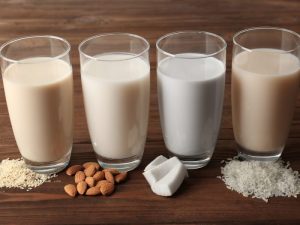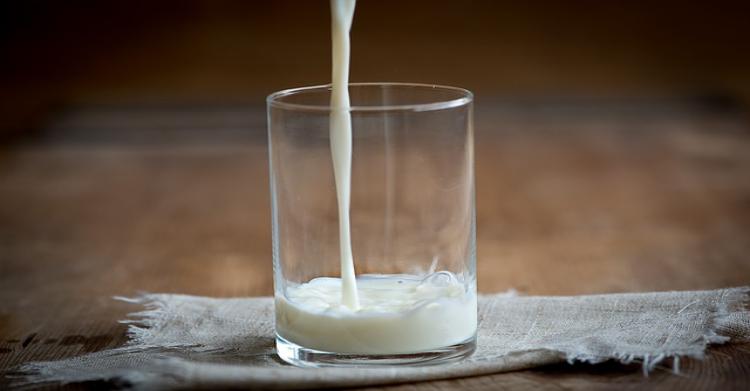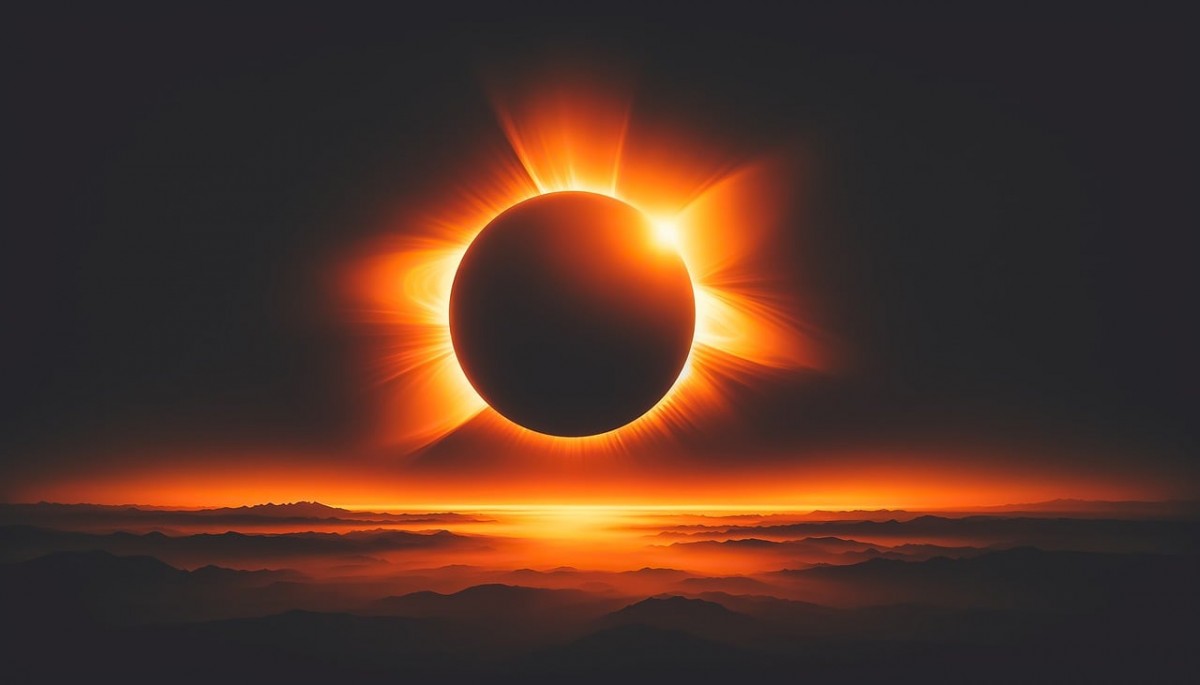Milk forms a skin on top when heated because of a chemical reaction that affects how protein and fat molecules interact with each other. When milk is heated rapidly, some of the water in it evaporates from the surface. This exposes proteins and fat molecules, which bind and dry out as warming continues. Skin most commonly forms when milk is heated over a stovetop, as stoves are generally capable of reaching very high temperatures quite quickly, though it can happen in the microwave as well. The film is not harmful, but is distasteful to many and can be prevented with constant stirring and a close eye on the temperature.
Chemical Reaction
When water evaporates from milk during heating, the milk’s protein and fat molecules become more condensed on the surface. Casein and beta proteins in particular tend to clump when they reach an internal temperature of around 113 to 122°F (about 45 to 50°C). As the heating continues, the soft protein layer begins to dry out, forming a skin-like film on the surface. This layer of skin forms a hard barrier, causing steam to build up, which can increase the liquid’s temperature even faster. This temperature increase is often what causes milk to boil over.
Varying Thicknesses Depending on Milk
The degree to which milk forms a skin when heated has a lot to do with the type of milk at issue. Raw milk tends to form the thickest skin, in part because of how dense the fat and protein globules are in this sort of milk. The pasteurization and homogenization processes that commercial milk goes through tend to break down the sizes of these molecules.
Simply breaking down molecules in no way prevents them from clumping when exposed to heat, however. Among pasteurized and homogenized milk varieties, whole milk — that is, milk with all of its original fats in tact — usually forms the most pronounced skin. Nearly all milk forms a skin of some sort when heated for long periods of time, though.
Skin’s Perplexing Presence on Fat-Free Milk
It is often surprising to see a film or skin on nonfat or “skim” milk, since it would seem that, without fat, the proteins would have nothing to bind to. In truth, it is rare to encounter milk that is truly fat-free. Most of the skim milk that is sold commercially has very low-fat content but is rarely ever truly fat-free. Even trace amounts of fat on the surface can contribute to skin formation.
A similar phenomenon happens with soy milk, which is generally marketed as fat-free. Natural fats still occur in trace amounts and can be drawn to the surface when exposed to very high temperatures. Soy film can be discarded but is also considered a delicacy in many Asian cultures. When removed and dried, it is referred to as yuba, or soybean curd, which is used in a variety of recipes.

Nutrition Concerns
Many people elect to remove the skin from hot milk. Doing so necessarily rids the milk of some of its proteins, but the effects on overall nutrition are usually negligible. Only the surface proteins and fats contribute to the film.
Prevention Techniques
Milk forms skin the fastest when left to stand over high heat. Stirring or whisking the milk as it warms is one of the easiest ways of preventing skin formation. Simmering for a longer time over low heat might also help.
It is entirely possible for skin to form on milk after it has been removed from heat, as its internal temperature remains high and water is still, in most cases, evaporating. Covering the milk with a tight piece of plastic can sometimes delay film formation, as can adding dense toppings like whipped cream or marshmallows. These will both cool the surface and help break up protein binding.











